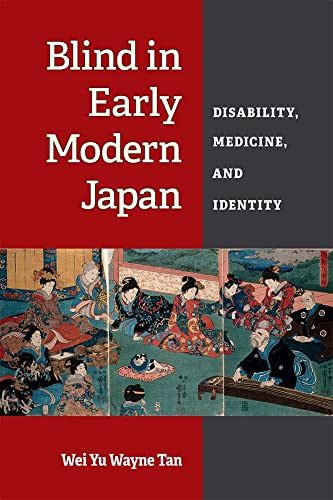Blind in Early Modern Japan
Disability, Medicine, and Identity (Corporealities Discourses Of Disability)
Wei Yu Wayne Tan
BOOK REVIEW

Blind in Early Modern Japan: Disability, Medicine, and Identity is not just a scholarly treatise; it's a deep dive into the multi-faceted lives of those who lived in the shadows of history, echoing the painful realities faced by people with disabilities in Japan's past. Wei Yu Wayne Tan's exploration of disability in early modern Japanese culture is a vivid tapestry woven from threads of personal stories, societal attitudes, and medical practices that reveal the complexities of identity and the human condition.
You stand at the threshold of a narrative that compels you to confront the stigmas and prejudices that have long marginalized individuals with disabilities. Through Tan's meticulous research, you are thrust into a world where the blind were often relegated to the sidelines, yet their stories brim with resilience, adaptation, and the audacity to forge identities amid exclusion. Picture walking through bustling streets of Edo, where the cries of street vendors mix with the silent yet powerful presence of those navigating the complexities of their existence without sight. The vividness of this era envelops you, making the past painfully palpable.
At the heart of Blind in Early Modern Japan lies the dichotomy of medicine and identity. Tan meticulously details how medical practices both shaped and were shaped by cultural perceptions. He unveils a society grappling with the implementation of new medical knowledge, intertwined with traditional beliefs about disability. The book articulates how advancements in medicine during this period were not just about healing but also about redefining what it meant to live with a disability. It sparks an urgent conversation about the intersection of medicine, identity, and societal perception, urging you to consider: how does society define normalcy, and how does it treat those who fall outside its narrow parameters?
Tan's writing is layered with emotional depth, bringing to life the voices of those often lost in historical texts. He challenges you to think critically about the prevailing narratives that treat disability as a deficiency rather than a distinct aspect of human experience. With each chapter, you are drawn further into the struggles and triumphs of blind individuals, and you can't help but feel an overwhelming sense of empathy and solidarity.
Among the reviews and opinions of those who have wrestled with Tan's work, there is a notable appreciation for the author's ability to interlace personal stories with historical fact. Critics have lauded Tan's approach as both refreshing and essential for understanding the multi-dimensionality of disability. However, some readers express a desire for a more detailed analysis of contemporary parallels, pointing out that the echoes of the past remain relevant in modern discussions about disability rights and identity politics. This dialogue is essential; it magnifies the lessons drawn from this rich historical narrative and pushes readers to apply them in their lives today.
The historical context of Blind in Early Modern Japan compels you to confront uncomfortable realities. It is an invitation to examine the legacies of the past, urging you not to overlook the struggles that have paved the way for current discourse on disability. The lessons gleaned from Tan's work resonate deeply in a world where many still face discrimination based on ability. This book serves as a critical touchstone; it challenges you to confront biases, both personal and societal, and it places a mirror in front of our collective conscience.
Tan's work lays bare the intricate dance between sight, identity, and societal acceptance in early modern Japan. It is not merely an academic text; it's a cry for recognition, understanding, and compassion that transcends time and culture. As you close this book, the lingering question remains: how will you take these stories of resilience into your own life? Through Tan's poignant narratives, you are left not only with a deeper understanding of the past but also with a responsibility to advocate for a more inclusive future. 🌌 This exploration isn't just vital-it's transformative. The dialogue sparked by Blind in Early Modern Japan is one you cannot afford to miss. Dive in, and let the ghosts of history guide you toward a brighter, more inclusive tomorrow.
📖 Blind in Early Modern Japan: Disability, Medicine, and Identity (Corporealities: Discourses Of Disability)
✍ by Wei Yu Wayne Tan
🧾 266 pages
2022
#blind #early #modern #japan #disability #medicine #identity #corporealities #discourses #disability #wayne #WeiYuWayneTan